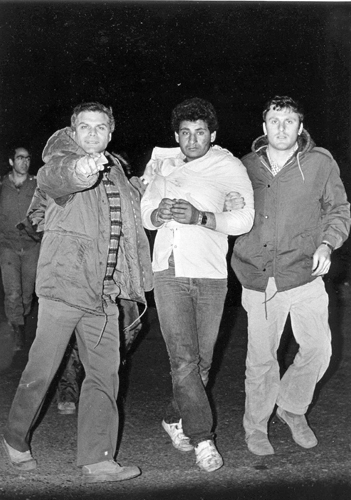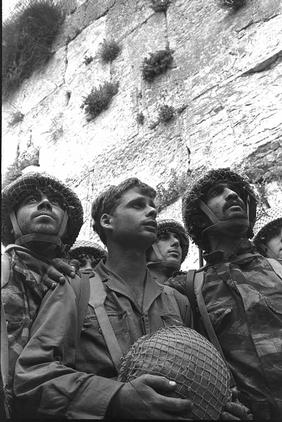| “Genealogy of an image in public consciousness. From David Rubinger’s photograph of paratroopers beside the western wall to Alex Levak’s photograph of the affair of bus line 300", in: Israel , The Chaim Weizmann Institute for the Study of Zionism and Israel, Tammy Razi &Naama Shefie (eds.), Summer 2008 : 161-180(Hebrew). Also published in: Die Neuen Hebräer, Doreet LeVitte Hartman (ed), Germany: Nicolai, 2005 (in German). | | | | Abstract | | | The essay, by following two iconic photographs in Israeli culture and their metamorphosis in public consciousness and the public arena over the years, seeks to demonstrate the way a landmark image and its various uses and content are "recycled" in the public sphere. The essay traces the genealogy of the images and by doing so reflects the cultural and political processes that took place in Israeli society.
The essay also examines the role of Six Day war photography in structuring Israeli nationalism of the period. Only one photograph is from the Six Day War – David Rubinger’s photograph of paratroopers beside the Western Wall. However, discussion of the other photograph, Alex Levak’s photograph of bus line 300, enables by way of contrast a description of the powerful control of the establishment in constructing the founding narrative significant until the rupture of the Yom Kippur War. Furthermore, it will demonstrate the strength of a single image, when the circumstances of its creation and distribution are free from the dictates of commission and it serves as a gatekeeper of democracy, to criticize and change establishment systems. Each of the photographs signifies a period – David Rubinger’s photograph of soldiers beside the Western Wall, photographed after its capture in the Six Day War, symbolizes the height of a period with clear nationalistic characteristics and Alex Levak’s photograph of bus line 300 marks a change in Israeli society and the start of a period of criticism and subversion. A discussion of both photographs and an examination of their development in public consciousness and the public sphere have a number of objectives. First, they will illustrate the process Israeli society went through as it moved from an enlisted and policed society to a matured civilian society that exercised its rights. Discussion of the photograph of bus line 300 will emphasize, as mentioned, the polar steps that society endured to free itself from the grip of the establishment powers. Secondly, they will attempt to examine what causes a particular photograph, and not another taken at the same event, to have significance in the public sphere. Thirdly, they will demonstrate the way a photograph is used to structure meaning and message.
The basic assumption of the essay is that a photograph has many identities and is dependent on context. In other words, the photograph is subject to other surrounding factors which influence it and help to shape and construct its meaning. In this essay, I will discuss the appropriation of images for the functioning of outside-ideological forces on one hand and for critical forces on the other. I will demonstrate how skillful use is made of photography, not as a witness but as a mediating conduit that produces images and gives them meaning. | | |
| | | |  | | Alex Levac, Bus no. 300, Courtesy of the photographer | | |  | | David Rubinger, The Israeli Paratroopers at the Wall after its Occupation, Six Day War, 1967, Courtesy of the photographer
| | |
|
|
| |
|
|
|